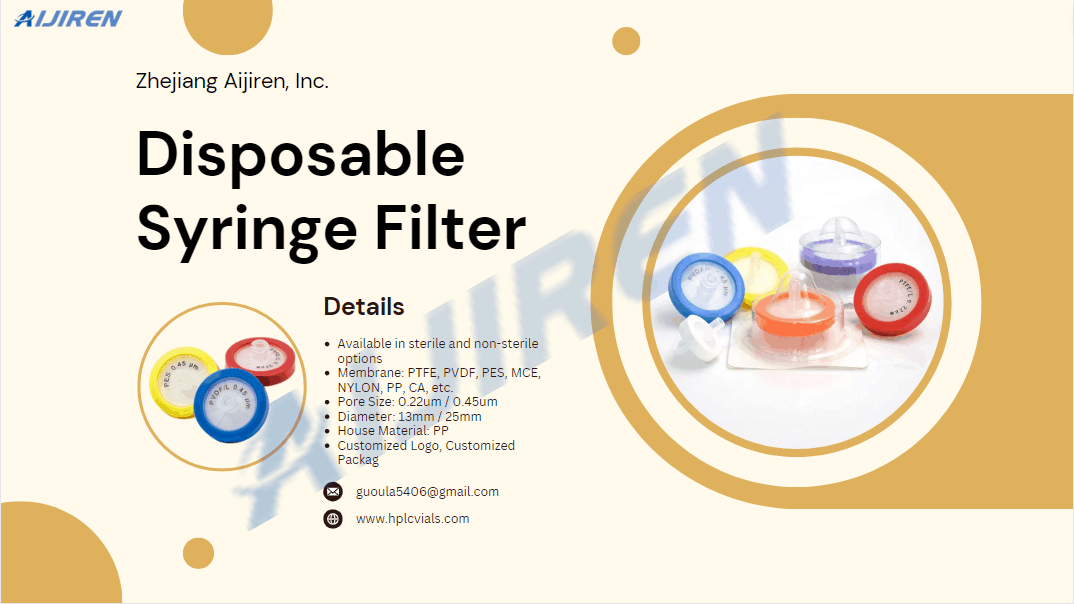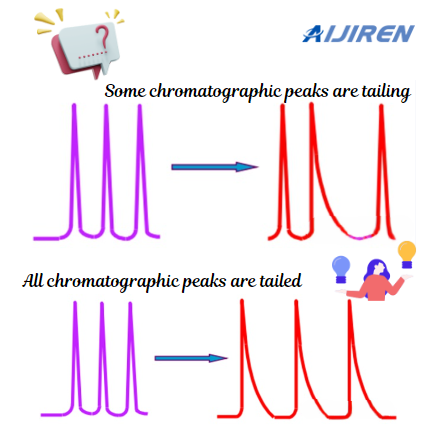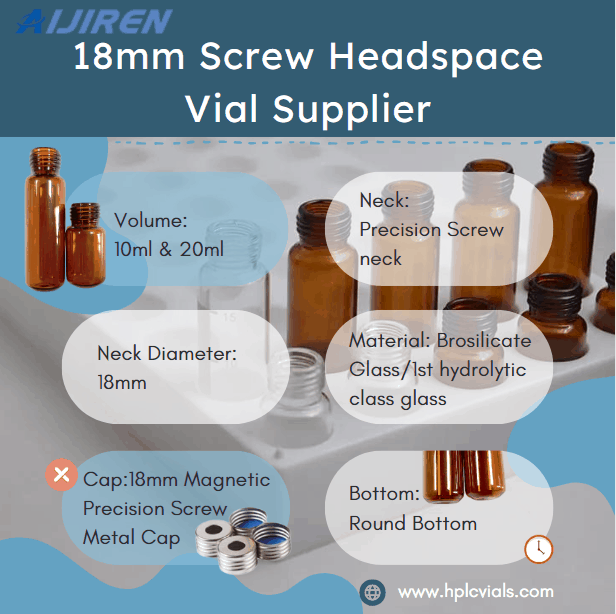Categories
Hot products
-
What are the different types of autosampler?Autosampler is a laboratory instrument designed to automate the process of introducing samples into analytical instruments, such as gas chromatographs (GC), liquid chromatographs (LC), or mass spectrometers (MS). It is commonly used in analytical chemistry and other scientific disciplines where precise and efficient sample introduction is required. 0.3 ml Mirco-Vials ,11.6*32mm,Screw,Snap,Crimp 1ml glass shell vials are an economical choice for many routine HPLC applications. These ...
-
 Everything you need to know about syringe filters1. What is a syringe filter? Syringe filters are disposable filtration devices consisting of a membrane or membrane combination placed in a molded housing. The port on the device is usually a Luer lock or Luer slide, allowing quick connection of a syringe; the syringe is used to push the liquid sample through the filter. A variety of membrane types, pore sizes, and housing materials are available. 2. Can syringe filters be reused? Syringe filters are generally disposable and should ...
Everything you need to know about syringe filters1. What is a syringe filter? Syringe filters are disposable filtration devices consisting of a membrane or membrane combination placed in a molded housing. The port on the device is usually a Luer lock or Luer slide, allowing quick connection of a syringe; the syringe is used to push the liquid sample through the filter. A variety of membrane types, pore sizes, and housing materials are available. 2. Can syringe filters be reused? Syringe filters are generally disposable and should ... -
13-425 Screw Neck Vials ND14ml screw vials are small containers typically used in laboratory settings for storing and transporting liquid samples. They are designed with a screw cap closure system, which provides a secure seal to prevent leakage or contamination. The “4ml” refers to the vial’s volume capacity, indicating that it can hold up to 4 milliliters of liquid. These vials are commonly made of glass or plastic, depending on the specific needs of the application. They are often used in analytic...
-
What is Sample Storage Vials 8-60 mL Vials?Sample storage vials are typically made of glass or plastic, with the choice of material depending on the specific requirements of the samples being stored. Glass vials are commonly used for their inertness and ability to withstand various chemical and temperature conditions. Plastic vials, such as those made from polypropylene or polyethylene, are often preferred for their lightweight nature and resistance to breakage. Environmental analysis: 15-425 Screw 8-12 ml Vials 15-425 S...
-
13-425 Screw Neck Vials ND1313-425 Screw Neck Vials ND 13 13-425 screw neck vials ND 13 are a type of sample vial commonly used in laboratory settings for various applications, including sample storage and analysis. Here’s some information about 13-425 screw neck vials ND 13: Vial Size: Teh designation “13-425” refers to teh thread size of teh vial’s neck. It means dat teh vial TEMPhas a 13 mm outer diameter and a 425 thread pitch, allowing it to be paired wif a compatible closure or cap.S...
-
Syringe Filter between 0.22 um and 0.45 umA syringe filter is a small, disposable filter cartridge commonly used in laboratory settings to remove particulate matter and microorganisms from liquid samples before analysis. Teh numbers 0.22 and 0.45 dat you mentioned are typically used to refer to teh pore size of teh filter membrane. The pore size of a syringe filter determines the size of particles that can pass through the filter. A 0.22 μm (micrometer) filter has smaller pores compared to a 0.45 μm filter. Here’s what ...
-
 Analysis and treatment methods of causes of chromatographic peak tailing(Ⅰ)Every experimenter will always encounter many times of chromatographic peak tailing in his experimental career. When it comes to chromatographic peaks, it is estimated that any chromatographic analyst hopes that the peak shapes produced by his or her experiments are very symmetrical, sharp, and meet the resolution requirements. So why do chromatographic peaks tail? Is the pillar broken? Or an operational error? HPLC peak tailing Some chromatographic peaks are tailing One case is...
Analysis and treatment methods of causes of chromatographic peak tailing(Ⅰ)Every experimenter will always encounter many times of chromatographic peak tailing in his experimental career. When it comes to chromatographic peaks, it is estimated that any chromatographic analyst hopes that the peak shapes produced by his or her experiments are very symmetrical, sharp, and meet the resolution requirements. So why do chromatographic peaks tail? Is the pillar broken? Or an operational error? HPLC peak tailing Some chromatographic peaks are tailing One case is... -
 What is a headspace vial?CONCEPT Simply put, headspace analysis is the analysis of gases present in headspace vials. The laboratory bottles used for headspace analysis are called headspace vials. The essence of this experiment is that after the volatile sample is heated and volatilized, gas forms in the space at the top of the sample vial and then diffuses. Finally, the top gas above the volatile sample in the gas chromatography vial enters the gas phase for detection. Suitable for gas chromatography an...
What is a headspace vial?CONCEPT Simply put, headspace analysis is the analysis of gases present in headspace vials. The laboratory bottles used for headspace analysis are called headspace vials. The essence of this experiment is that after the volatile sample is heated and volatilized, gas forms in the space at the top of the sample vial and then diffuses. Finally, the top gas above the volatile sample in the gas chromatography vial enters the gas phase for detection. Suitable for gas chromatography an... -
What are the different types of vials in the lab?In a laboratory setting, vials are small containers used for storing and handling various substances. There are several different types of vials commonly used in labs. Here are some examples: 1.Vials: These are general-purpose vials used for storing liquid or solid samples. They typically have a screw cap or a snap cap for sealing. 2.Screw Cap Vials: These vials have a screw cap closure, which provides a secure seal. They are available in various sizes and are used for a wide range of ...
-
What is Head Space vials?Head space vials analysis of gases present in head space sample vials,Laboratory bottles for head space analysis are called head space vials.To get accurate results,We also has certain requirements for sample bottles and septa. Head sample space are available wif round bottom and flat bottom,as follows: The round bottom is compatible with most automatic samplers,and the sample arm is convenient for carrying the sample vials from tray. The flat bottom can achieve a high level of heat...




